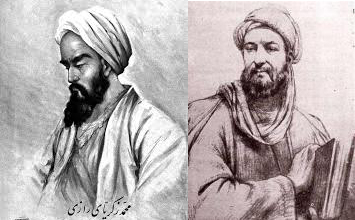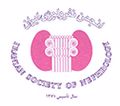
History of Nephrology in Iran
Nephrology has a long history in Iran. Abu Bakr Mohammad Ibn Zakaria Razi, Iranian physician, philosopher and chemist, who lived from 865 to 925 AD, is considered a pioneer in nephrology. Razi has written several books, including the book "Clinical Observations," in which he described the evolution of various diseases. The book includes 17 clinical biographies, of which 6 refer to renal patients and one to a patient with pre-eclampsia. Abu Ali Sina (980-1037 AD) was one of the scientists who studied and tested urine completely. In his famous book, Canon in Medicine, he described the full urine test in 30 pages. Ibn Sina's interpretation of the full findings of urine is very interesting. "If the urine is cloudy and dark, and the deposits in its various layers are suspended, it is a symptom of nausea, insomnia, deafness and mental confusion, which indicates the possibility of impending bleeding of the nose." This sentence can be considered as a description of the uremia caused by hereditary nephritis (Allport syndrome).
The growth of medical science in Iran has slowed down after the transfer of the Jundishapur University to Baghdad. About 75 years ago, with the establishment of a medical faculty at Tehran University, the science of modern medicine began in Iran. At that time, there was no distinct discipline in the field of nephrology in medicine, and renal patients were treated in the public wards of medicine and treated by domestic specialists, in particular the group trained in France. The first book of kidney disease in Persian was published by Dr. Nouraldin Hadovi in Iran in 1337.
Modern nephrology has begun in Iran since the mid-1340s and after the return of a number of internists from France, England, and the United States to Iran (see Nephrology in Iran, History). Since the year 1348, a number of inner-bed beds were allocated to nephrology patients, and the nephrology gradually expanded in the country.
The first hemodialysis in Iran in 1339 under the supervision of Dr. Mehdi Azar in the internal medicine ward of the Hezar- Takhtekhabi hospital for the treatment of acute renal failure was performed using a Kolff Rotating Drum machine. Previously, only acute peritoneal dialysis was available to treat patients with renal failure. He sent his assistant, Dr. Mehdi Ghavamian, to the USA to learn dialysis from Dr. Willem J. Kolff. In his training course, Dr. Ghavamian published two papers, one of them being the first report of NSAID-induced ATN.
Thus, the program of chronic hemodialysis began and gradually developed between 1346 and 1355 in several academic and private hospitals. With the establishment of the Department of Health's Dialysis Center in 1355, now called the "Center for the Management of Non-Communicable Diseases", dialysis facilities were developed throughout the country. According to the statistics of Azar 1397, there are currently 32,832 hemodialysis patients in 571 chronic hemodialysis units in the country under chronic hemodialysis.
The first kidney transplant in Iran was conducted in 1347 by Dr. Seyed Mohammad Sanadizadeh at Shiraz university. The kidney transplant from cadaver began in 1383, and now accounts for about 60% of all transplant cases. The kidney transplant program has also grown vastly over the years, as now 30 kidney transplants are working at university hospitals in the country. During these years, 47,761 kidney transplants were performed in Iran, of which 36,449 were live donors and 11312 from the brain death donor (November 2018).
Peritoneal dialysis was initiated by Dr. Ezatollah Abdi in 1357 with the solutions of the Italian company BF, with 6 patients at the hospital, and subsequently started in the same year in Mashhad by Dr. Masih Naghabi and gradually expanded. The first patient with peritoneal dialysis died after 6 months, due to peritonitis. Catheterization of these patients was done by the late Dr. Hossein Rasouli. Peritoneal dialysis was continued by Dr. Shahnaz Atabak in 75 patients in 1996 at the center of Sodeh, with 75 patients and then concentrated in the Shafa center. The center now covers 50 patients. Dr. Iraj Najafi, with the establishment of a peritoneal dialysis registry in the center, conducted several studies on various aspects of peritoneal dialysis and published in collaboration with other nephrologists of the country.
Currently, 1721 CAPD patients are treated in 75 centers in the country and peritoneal dialysis centers of Alzahra Hospital in Esfahan with 130 patients, Imam Reza Hospital in Tabriz with 130 patients, Baqaeeip Hospital in Shahid Sadoughi Hospital in Yazd with 110 patients, Shafa Hospital in Kerman with 100 patients, and Imam Reza Hospital in Mashhad with 63 patients are the largest CAPD centers in Iran (November 2018).
Membership in the IRSN is as follows:
1. Continuous Membership: All people who have at least a degree in nephrology are eligible to join the society in accordance with the rules of the IrSN Statute.
2. Affiliated Membership: Anyone who has a degree in internal medicine with the benefit of nephrology can join the community.
3. Honorary Membership: All Iranian and foreign personalities whose scientific, cultural and social status are of special importance or can contribute effectively to the goals of the community can become members of the IrSN.
Each member of the IrSN annually pays a fee according to the Board's approval. The amount of membership fee in 1401 was 3000000 IRR, and 3500000 IRR was approved for 1402.
Based on last data (November 2018) of Ministry Health of Iran;
There are 32832 patients on hemodialysis in 571 chronic dialysis center.
It has been done 47761 kidney transplantation (36449 from Living donor ad 11312 from deceased donor).
There are 1721 peritoneal dialysis patients in 75 related centers.
